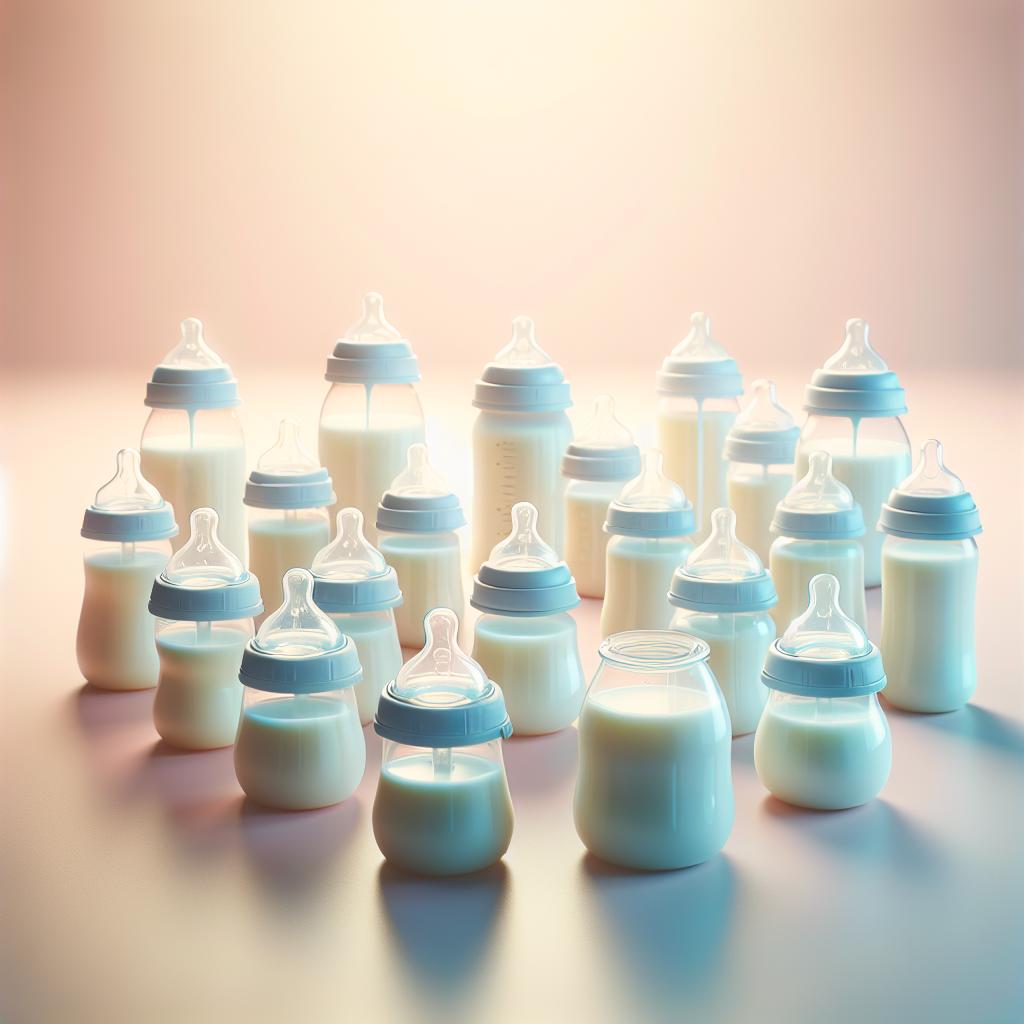Bottle Feeding Explained: The Why and the How
The Reasons Behind Bottle Feeding
Bottle feeding is a choice that many new moms make for a variety of reasons. While some may not be able to breastfeed due to medical or personal reasons, others choose to bottle feed their babies for a mix of lifestyle and convenience factors. It is important to remember that there is no ‘right’ or ‘wrong’ feeding method. Being a mom can be tough enough without feeling guilt about your feeding choices. What matters most is that your baby is healthy and getting the nutrition they need.
Choosing the Right Bottle
As a new mom, choosing the correct bottle for your infant might be one of the early challenges you face. But don’t worry. Here are a few points to consider:
- Look for bottles that are BPA-free and easy to clean.
- Choose bottles with a slow-flow nipple to start with. This can help prevent overeating.
- Experiment with a few different brands to find which one your baby prefers. Every baby is unique!
This handy innovative baby feeding solutions guide might help you make the decision.
Mastering the Bottle Feeding Technique
Bottle feeding your baby is not as simple as it might look. For new moms, a few bottle feeding tips can go a long way in making the process smoother and more enjoyable for both you and your baby.
1. Positioning: Make sure you hold your baby in a semi-upright position during feeding. This can help prevent ear infections that could occur if milk gets into the Eustachian tubes.
2. Check the bottle’s temperature: Before feeding your baby, always check the food’s temperature by dropping a little on your wrist. It should be warm, not hot.
3. Burping: Mid-feed and post-feed burping is essential as it can help relieve any gas that your baby might have swallowed during feeding. What to Expect recommends burping your baby every two to three ounces for infants under six months.
4. Follow a routine: Babies thrive on routine. So, aim to feed your baby at the same times each day. This can help regulate their body clock and make the feeding process more manageable for you.
Remember, patience is key. Bottle feeding is a journey that you and your baby are embarking on together. If you find that your baby is not accepting the bottle, don’t panic. It might take a few tries for both of you to get used to this new experience.
Maintaining Proper Hygiene
Keeping your baby’s bottle clean is paramount. According to the CDC, bacteria can grow quickly in bottles and other feeding items. Hence, thorough cleaning and sterilization are critical in safeguarding your baby’s health.
When to Seek Professional Advice?
If you are ever unsure about your baby’s feeding habits or health, it is always best to seek professional advice. Ask a healthcare provider if your baby is feeding too much or too little, or if you notice changes in your baby’s feeding behavior.
In conclusion, bottle feeding is a practical choice for many moms and can be a positive experience when done right. With practice, patience, and a few bottle feeding tips at your disposal, you’ll soon become a pro!
Temperature Matters
The temperature of the milk you feed your baby could make a big difference in their comfort. According to NHS, milk should be at body temperature, warm but not hot. While cold milk isn’t harmful and some babies might not mind it, others might prefer it warmed up. Remember to always thoroughly mix and test the milk before feeding your baby.
The Magic of Skin-to-Skin Contact
Even though you’re bottle feeding, skin-to-skin contact is still very beneficial for both you and your baby. Such physical closeness can promote bonding, calmness, and might even help regulate your baby’s heart rate and breathing. Try bottle feeding your baby while they’re on your chest to provide the comfort and bonding benefits of skin-to-skin contact.
Significance of Paced Feeding
Paced feeding is a method that allows the baby to control the pace of feeding, which in turn reduces the chances of overfeeding or developing feeding habits that can lead to obesity later in life. Tips from HealthyChildren.org suggest waiting for your baby to show hunger signs before starting a feeding and allowing breaks every few minutes.
Road to Solid Foods
Bottle feeding provides a smooth transition when introducing your baby to solid foods. Once your baby is ready for solids, usually around six months, you can incorporate the bottle feeding routine with their first exposure to solids such as pureed vegetables or fruits.
Signs of Allergy or Intolerance
If after the bottle feed, your baby seems irritable, vomits or has diarrhea, it might be due to allergies or intolerance. It is essential to track these reactions and report them to your healthcare provider for further investigation and guidance.
Tips on Bottle Feeding While Traveling
Bottle feeding comes with its own set of challenges while traveling. Carrying pre-sterilized, ready-to-use feeding bottles can prove very helpful. Keep cooled boiled water and carry a flask to warm it en route. It will make feeding easier and ensure your baby’s feeds are safe and hygienic.
Bottle feeding, though different from breastfeeding, can and should be a fantastic experience for both the mother and the child. What matters is taking care of the baby’s nutritional requirements and making the time together relaxed, enjoyable, and full of affection.
Links to Additional Resources
For more comprehensive guidance on bottle-feeding, consider visiting the following excellent resources.






